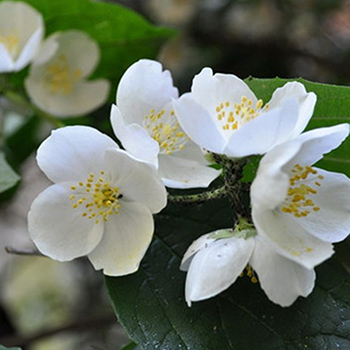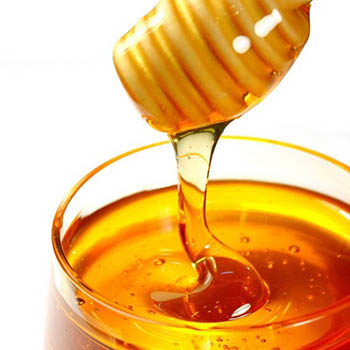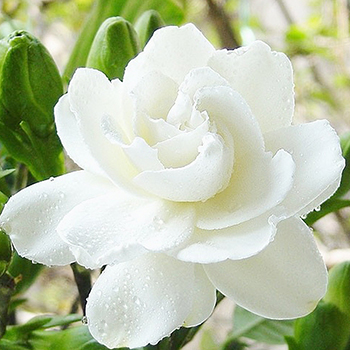目前購物車內沒有商品
THE ORGANISM/TOXIN
Clostridium botulinum will only grow at low Ehvalues which are normally correlated with the absence of oxygen. There are a number of neurotoxin types which differ markedly in their characteristics and ability to cause disease in
humans.
Two groups are important in food:
Group I-Types A, B and F (proteolytic strains)
Group II-Types B, E and F (nonproteolytic strains)
Because group I organisms are proteolytic their growth generally causes spoilage of the contaminated food. There are two manifestations of disease relevant to
food; classic foodborne botulism and infant botulism.
GROWTH AND ITS CONTROL
Growth:
Temperature: Group I Minimum 10oC, optimum 35-40oC, maximum 45-50oC.Group II Minimum 3.3oC, optimum 18-25oC,maximum 40-45oC.
pH: Group I Minimum 4.6, group II Minimum 5.0.Toxin is produced by either group at pH values down to 5.2, but in some instances toxin may be produced
at pH values lower than this; for example in potatoes adjusted to pH 4.83 and temperature abused.
Atmosphere:
Atmosphere: Normally grows in the absence of oxygen. However this may be deceptive as there have been outbreaks caused, for example, by spores have been outbreaks caused, for example, by spores being trapped between food and aluminium foil wrapping, which is not an obvious low oxygen environment. The presence of even 20% O2 in packaged foods is not necessarily enough to prevent growth.
Water activity: Group I inhibitory NaCl = 10%,
group II 5%. Minimum aw for growth group I 0.94,
group II 0.97. Toxin can be produced at aw values
permitting growth.
The minimum aw for growth decreases as the pH increases towards pH 7 in vacuum-packed potatoes.
Survival:
Temperature: Spores and toxin: Resistant to freezing.
Vegetative cells: Undefined
pH: Toxin: Stable at low pH, inactivates quickly at pH 11.
Water Activity: Spores survive drying.
Inactivation (CCPs and Hurdles):
Temperature: For spores: D100 group I 25 min, group II <0.1. D121 group I 0.1-0.2 min, group II <0.001 min. A 12 D process, controlling group I spores, has been adopted for the canning of low-acid (pH> 4.6) foods. This is the equivalent of heating to 121oC for3 min. 80oC for 6 min or 65oC for 1.5 hours. Toxins may be slightly more heat stable at ower pH values. Resistant to freezing.
l Vegetative cell: Killed by a few minutes exposure to 60ºC.
pH: Spore: Thermal death is accelerated at extremes of pH (<5.0 and >9.0) for type A spores. Citric acid is more inhibitory than HCl.
Preservatives: (NB: Some of the preservativesdiscussed here may not be permitted in New Zealand). Nitrite is an important preservative for the control of C. botulinum. In addition sorbates,parabens, nisin, phenolic antioxidants,polyphosphates, ascorbates, EDTA, metabisulphite,n-mono alkyl maleates and fumarates and lactate salts are useful preservatives if used as hurdles.Nitrite and nitrate curing do not completely inhibit growth in temperature abused vacuum-packed trout.
Nitrite in combination with other factors can control
growth in meat products. Inhibition by nitrite is
affected by pH (greater inhibition at lower pH
values).
Sorbic or ascorbic acids may be used in combination with a low concentration of nitrite to inhibit C.botulinum.Liquid smoke appears to be effective in fish but not
in meat products.
Methyl and propyl paraben inhibit growth at concentrations of the order of 0.1%.
Diphosphates were shown to be more inhibitory than tri- or polyphosphates.
Nisin is used as an anti-clostridial compound in dairy products. Concentrations used can be as high as500ìg/g.Lactic acid bacteria added in starter cultures, inhibit
growth of C. botulinum in meat products.Sulphites do not inhibit growth in modified atmosphere packed (30% N2:70% CO2) potatoes stored at room temperature.
Bacteriocins produced by some lactic acid bacteria
are inhibitory to C. botulinum.The interactions of various preservatives, as would
be used in hurdle technology, are too complex to allow generalisation and particular combinations intended for food use will need to be validated.Sanitisers/Disinfectants: (These products must be used as advised by the manufacturer). Spores are inactivated by ozone or chlorine dioxide. Chlorine used at low pH is more effective than at neutral or alkaline pH.
Disinfectants used in the food industry, i.e. hydrogen peroxide, chlorine and iodophors are effective at inactivating spores.
Hydrogen peroxide is used at levels up to 35% in combination with heat.
Ethylene oxide is effective at inactivating spores although other factors such as temperature impact on its efficacy.
Normally chlorinated water should effectively
inactivate toxin.(N.B. The absence of a sanitiser/disinfectant from this section does not imply that it is ineffective).
Common names and synonyms:
Botulinum toxin;
Toxinum botulinum;
Botulinum A toxin haemagglutinin complex;
Dysport (botulinum toxin type A) Oculinum (botulinum toxin type A)
Botox (botulinum toxin type A)
Myobloc (botulinum toxin type B)
Main Toxins:
ough the seven neurotoxins (A, B, C, D, E, F and G) are genetically distinct, they possess similar molecular weights and have a common subunit structure. The complete amino acid sequences of the various serotypes are becoming known. Regions of sequence homology among the serotypes and between botulinum toxins and tetanus toxin, suggest that they all employ similar mechanisms of action.
The toxins are synthesized as single chain polypeptides with a molecular mass of approximately 150 kDa. In this form, the toxin molecules have relatively little potency as neuromuscular agents. Neurotoxin activation requires a two-step modification in the tertiary structure of the protein.
|
Toxicity |
|
|
Route |
LD50 |
|
Intravenous (mouse) |
0.0003 micrograms/kg |
|
Inhalation |
0.02 mg/min/m3 |
|
Chemical Properties |
|
|
Structure |
A very large protein that has two subunits in its mature form. |
|
CA Name
|
Botulin |
|
Trivial Names |
|
|
Registry Number |
107231-12-9 |
|
Molecular |
Not applicable |
|
Molecular |
Approx. 150,000 |
|
Solubility |
Soluble in water |
|
pKa in water |
|
|
Complete synthesis |
Chemical synthesis is impractical. Toxin can be manufactured by fermentationof Clostridium botulinum or a producer microorganism expressing the cloned gene for the toxin. |
|
Why is it botulin and not some chemical name? |
It's botulin because it is a protein from Clostridium botulinum. Although it is not an unbreakable rule, a protein usually is given a name ending in "-in." Examples are insulin, actin, myosin. The protein is unique to C. botulinum so it is given a name that indicates the source (in this case the "botul-" part.) Other examples of this sort of name include heveins from Hevea brasiliensis (a rubber tree); clupeins from fish of the genus Clupeaand the poisonous protein ricin from the castor bean Ricinus communis.
The toxin is also known as "botulinus toxin." This is not wrong, but is the sort of name that is usually associated with a crude preparation. Botulin refers to the purified protein.

Preparation of fish and shellfish.
Skin and muscles were aseptically removed from fresh fish samples in a laminar-flow hood by using sterile instruments, cut, placed in individual plastic pouches, homogenized in a blender (Stomacher; Seward Medical, London, United Kingdom) for 2 min, and stored at-20°C until use. Flesh of shellfish was aseptically taken and treated in the same way as for fresh fish. Approximately 100 g was prepared for each sample.

The wave especially pours the germ poisoned is BEPAST" B".These are the form bud rod bacteria to belong to the Botulinum Bacilli, being becoming the spore to catch.They look rather alike go to their relation, the bud rod bacteria belongs to the Tetani(the tetanus infection becomes the reason agency) to belong to the Perfringens with the form bud rod bacteria.(the clostridial myonecrosis becomes the reason agency)That is the ability to continue to exist the long spore of long few years in dry environment in right background, their"the plan overthrows" enters the alive bacilli and grows to produce a toxin for causing death quickly.
Botulism Toxin
extreme poison produced by the clostridium botulinum bacteria
lethal adult dose: 0.0000001 gram
the term "botulism" coined in 1879 by a German physician (Muller), derived from the latin "botulus" ("sausage") following a 1793 outbreak in Wildbad where the victims had eaten spoiled blood sausage
there are seven serotypes: A, B, C [C1,C2], D, E, F, G
Botulism Toxin A (BTX-A) is the most active
types A, B, E & (rarely) F are active in humans; C & D in animals
Under the trade name BOTOX used in some medical procedures to effect muscle groups
These are the characteristic of clostridia capable of producing botulinum neurotoxin:
|
C. BOTULINUM GROUP |
||||||
|
I |
II |
III |
IV* |
C. baritii |
C. butyricum |
|
|
Toxin type |
A, B, F |
B, E, F |
C, D |
G |
F |
E |
|
Growth temperature (°C) |
||||||
|
Optimum |
35 – 40 |
18 – 25 |
40 |
37 |
30 – 37 |
30 – 45 |
|
Minimum |
12 |
3.3 |
15 |
10 |
||
Botulinum Toxin and Its Medical Applications
Botulinum toxin is an incredibly potent neurotoxin. Popularly sold under the brand name Botox, in 2001 over one million patients were treated in the United States. Sales in the United States exceeded $300 million in 2001. Botox is the most popular medical cosmetic treatment in the UK.1
Despite its popularity, for most people Botox simply refers to a method of medical cosmetics; removing 'crows feet' and 'frown lines' from properly aged faces. More often used as a punchline than referred to as medical treatment, Botox has a strange place in the public's eye. Even more interesting are the remarkable uses for this deadly neurotoxin.
What is botulinum toxin?
Bacteria of the species Clostridium botulinum produce seven forms of neurotoxin23. The toxins are among the most potent, most poisonous substances in the world. These neurotoxins (in fact, all neurotoxins) attach themselves to nerve endings. There are many different kinds of nerves, but the botulinum toxin attaches to nerves that control muscles 4. In this binding botulinum toxin prevents the nerve from sending its chemical signal to the muscle, preventing the muscle from contracting5.




